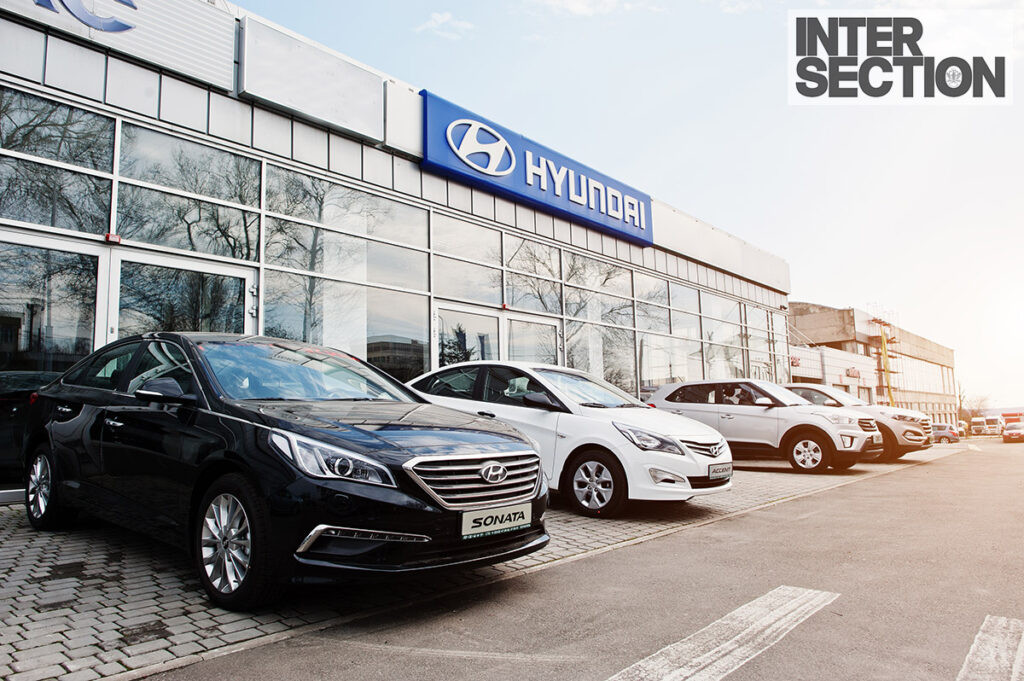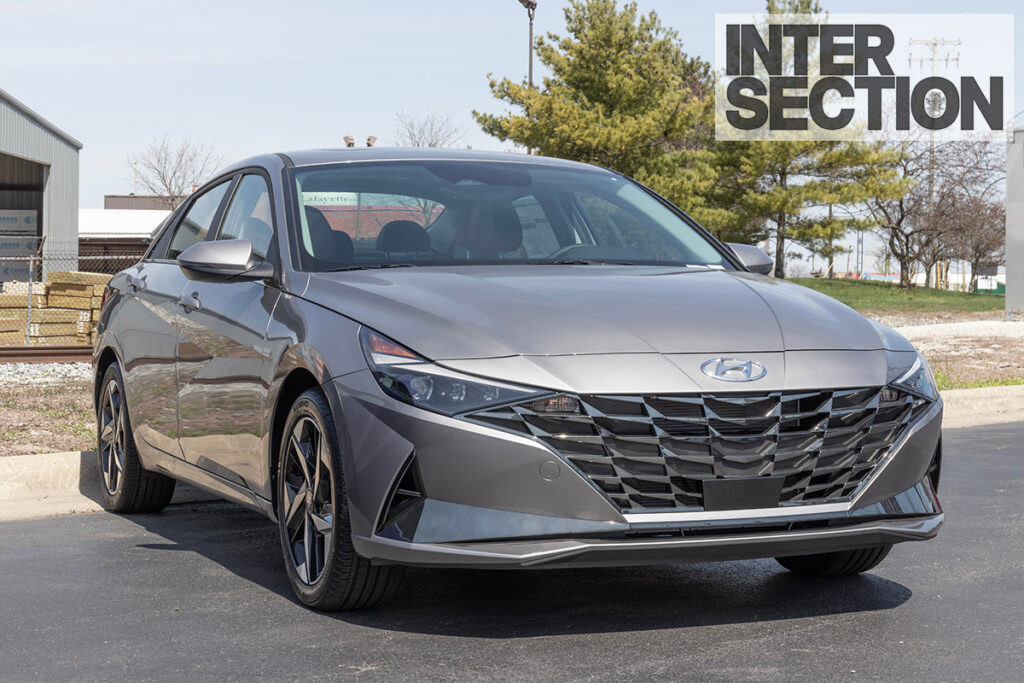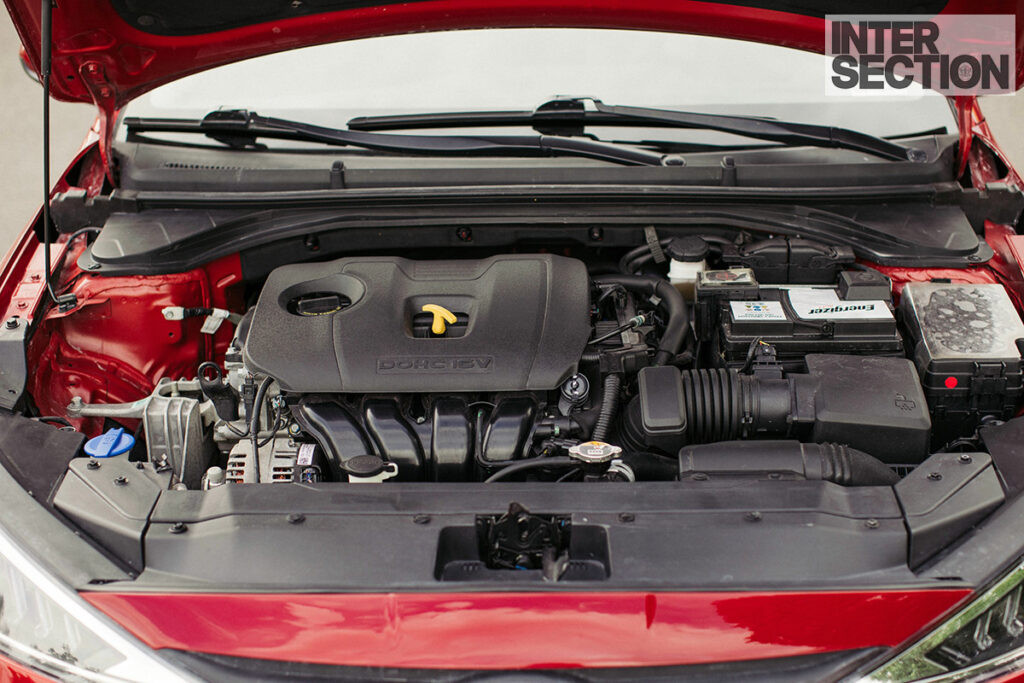The question “Where Is Hyundai Made?” takes us on a fascinating journey across continents, revealing the intricate global network behind one of the world’s leading automotive brands. While Hyundai Motors proudly originated in South Korea, its manufacturing prowess extends far beyond its home borders. Let’s explore the diverse locations where Hyundai vehicles come to life.
Hyundai’s Global Manufacturing Hubs
Hyundai’s commitment to serving global markets efficiently is evident in its strategically located production facilities worldwide. You’ll find Hyundai manufacturing plants in key regions including the USA, Brazil, Turkey, Czech Republic, Russia, South Africa, China, India, Indonesia, and Vietnam. This expansive network allows Hyundai to tailor production to regional demands, optimize logistics, and contribute to local economies.
 Hyundai showroom
Hyundai showroom
South Korea remains the heart of Hyundai’s operations. The country boasts state-of-the-art Hyundai factories in cities like Ulsan and Asan. These Korean facilities are central to Hyundai’s global production, manufacturing a wide spectrum of vehicles, from compact cars to robust SUVs.
To better serve the North American market, Hyundai has established a significant manufacturing presence in the United States. Plants in Alabama and Georgia are pivotal in meeting the demand for Hyundai vehicles in this region.
Beyond North America and South Korea, Hyundai’s global footprint includes manufacturing plants across Europe, India, China, and Latin America. This global distribution strategy enables Hyundai to adapt to local market preferences, minimize transportation expenses, and positively impact the economies of the regions where they operate.
For a clearer picture, the table below outlines some of Hyundai’s key manufacturing locations:
| Facility Name | Location |
|---|---|
| Alabama Plant | Montgomery, AL (USA) |
| Brazil Plant | Sao Paulo |
| Ulsan Plant | Korea |
| Asan Plant | Korea |
| Jeonju Plant | Korea |
| China Plant | Shunyi District, China |
| Russia Plant | Sestroretsk, Russia |
| Czech Plant | Prague, Czech Republic |
| Turkish Plant | Izmit, Turkiye |
| India Plant | Irungattukottai, India |
| Hyundai Thanh Cong Manufacturing Vietnam | Ninh Binh province, Vietnam |
| Indonesia Plant | Cikarang, Bekasi, West Java |
Decoding Your Hyundai’s Origin: The VIN
Curious about where your specific Hyundai model was manufactured? Hyundai has made it relatively easy to determine this. The key lies in your car’s Vehicle Identification Number (VIN). This unique 17-character code is typically found on the driver’s side dashboard (visible through the windshield), the driver’s side door jamb, or in the engine compartment.
The first character of the VIN indicates the country of origin. For instance, if your VIN begins with “K,” it signifies that your Hyundai was manufactured in South Korea, Hyundai’s homeland. Alternatively, a VIN starting with “5” points to production in the United States. It’s worth noting that different countries where Hyundai has manufacturing plants will have their own unique VIN codes.
For more detailed information, refer to your vehicle’s auto manufacturer label. This label is usually located on the driver’s side door frame or the inside edge of the driver’s door. It provides specific details about the manufacturing plant, including its location, offering valuable insights into your vehicle’s production origin.
US-Made Hyundais: Sonata and Elantra
Which Hyundai models are currently produced in the United States? The answer is two of Hyundai’s most popular sedans: the Hyundai Sonata and the Hyundai Elantra.
 Hyundai Elantra
Hyundai Elantra
These models are assembled at Hyundai’s advanced manufacturing facility in Montgomery, Alabama, known as Hyundai Motor Manufacturing Alabama (HMMA). This plant is a cornerstone of Hyundai’s strategy to meet the strong demand for its vehicles in the American market.
The decision to manufacture the Sonata and Elantra in the US underscores Hyundai’s dedication to American consumers and its commitment to providing high-quality, locally-made vehicles tailored to American preferences. This localization strategy not only reduces shipping costs but also generates jobs and stimulates economic growth in the region. Furthermore, it allows Hyundai to respond more quickly to evolving market trends and customer demands in the US automotive landscape.
Car enthusiasts often express their passion by customizing car-related accessories. For example, custom enamel pins, keychains, and license plate frames for Hyundai Sonata and Elantra models are popular. These items reflect the emotional connection car fans have with their vehicles and serve as a personal statement of style and taste.
Hyundai Engines: Mostly In-House Production
Who manufactures Hyundai engines? Hyundai primarily produces its own engines in-house. The company has its dedicated engine manufacturing division, Hyundai Powertech, responsible for creating the powertrains for many Hyundai vehicles. This vertical integration gives Hyundai significant control over engine quality, efficiency, and performance, ensuring they meet the brand’s stringent standards.
 Hyundai Engines
Hyundai Engines
Hyundai’s engine lineup encompasses a wide range, from fuel-efficient four-cylinder engines to powerful V6 and V8 options. Notably, their Theta and Gamma engine families have earned recognition for their advanced engineering and fuel efficiency.
In recent years, Hyundai has expanded into electric and hybrid powertrains. These electric motors and related components are also designed and produced by Hyundai Motor Group’s engineering teams, demonstrating their commitment to innovation across the automotive spectrum.
While in-house production is the norm, Hyundai has also collaborated with companies like Cummins for specific engine developments, particularly for heavy-duty truck applications. These partnerships combine Hyundai’s automotive expertise with specialized industry knowledge.
Importing a Hyundai: What to Consider
What if you’re considering buying an imported Hyundai? Imported Hyundais, manufactured outside of your home country, can offer unique characteristics. It’s crucial to research the specific model you’re interested in to understand any differences between imported and locally-produced versions. Imported models might feature distinct design elements, specifications, or options tailored to the manufacturing country’s market.
Imported vehicles can sometimes come with a higher price tag due to import taxes and shipping fees. However, they may also offer exclusive features or variations not available domestically, which can be appealing to buyers seeking something unique.
Furthermore, imported Hyundais showcase the brand’s global manufacturing expertise, potentially incorporating diverse design influences and technological innovations from different regions. However, it’s important to consider potential maintenance and service implications. Parts availability and servicing requirements for imported models might not be as readily accessible as for domestic models.
Frequently Asked Questions
Where Was Hyundai Founded?
Hyundai was founded in Seoul, South Korea, in 1967 by Chung Ju-Yung. From its humble beginnings, Hyundai has evolved into a global automotive powerhouse with a significant presence in markets worldwide.
Is Hyundai Korean or Japanese?
Hyundai is definitively South Korean. It was established and is headquartered in South Korea. In contrast, Japanese automakers like Toyota, Honda, and Nissan originate from Japan.
What Makes Hyundai Cars Stand Out?
Hyundai is often recognized as a strong contender in the automotive market due to its blend of affordability, comprehensive warranty coverage, and a wide array of features in its vehicles. Hyundai vehicles also emphasize innovative technology, fuel efficiency, and safety, making them an attractive choice for many car buyers.
The Global Reach of Hyundai Manufacturing
With a network of strategically positioned manufacturing plants spanning the globe, Hyundai effectively caters to the diverse demands of the international market. This global manufacturing footprint underscores Hyundai’s commitment to quality, performance, and contributing to local economies worldwide.
See more: Where Are Toyotas Made?
